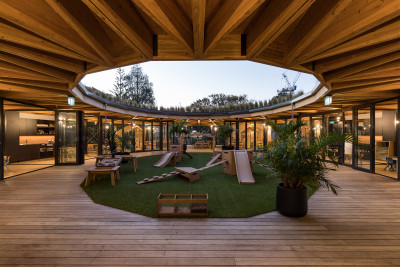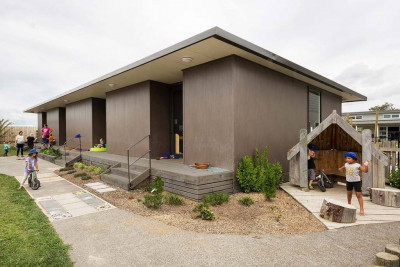"We value space because of its power to organise, promote pleasant relationships among people of different ages, create a handsome environment, provide changes, promote choices and activity, and it's potential for sparking all kinds of social, affective, and cognitive learning. All this contributes to a sense of wellbeing and security in children."
Loris Malaguzzi, The Hundred Languages of Children
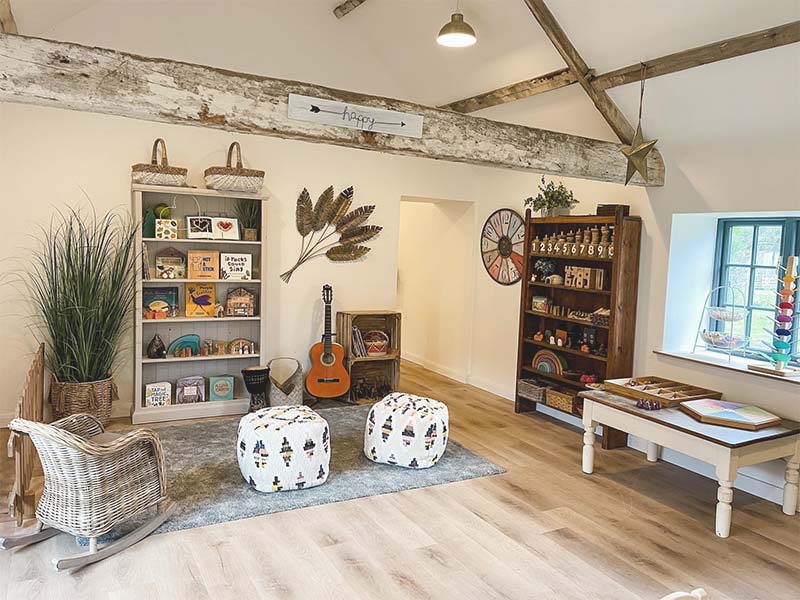 Image of a reading space at Roseville Childcare, United Kingdom.
Image of a reading space at Roseville Childcare, United Kingdom.
Personalising your early years’ environment to reflect the culture and values of your community will strengthen the relationships among educators, children, and parents. How do you achieve and maintain a beautiful yet relevant environment? Look to your early learning community for inspiration, ideas, and direction and then plan to sustain your environment daily, monthly, and annually.
Here are three steps you can take towards achieving a more contextual early years environment, which is valuable for children’s learning, growth, and development.
Step 1: Ensure your environment is culturally and ecologically relevant
Research shows culturally relevant environments promote a connection to place and the sense of distinct human identity, motivating people to conserve and sustain natural and human-built environments.*
Authentically embedding culture into our environment provides an opportunity for people to connect and share stories; through a vase of flowers, an artifact of meaning, or a chosen piece of art. Items don’t have to be expensive or purchased, just relevant and meaningful. So, how do we ensure our environments are contextual?
- Look to your local community for inspiration. When choosing a colour palette and materials, our surroundings often provide all the inspiration we need, specifically where nature is concerned, e.g., bush, beaches, urban parks, etc. Where are local families familiar with and spending their time?
- Connecting the environment to our families’ cultures and interests increases parental participation and connection.
- Personalise your space, so the child’s voice is tangible. Valuing their personality and opinion sets them up to actively participate and take ownership of their space, growing and developing heart-filled environments.
- Evaluate spaces with an aesthetic perspective. Research shows children who spend time in an aesthetically pleasing environment display improved behaviour, renewed focus, and enhanced creativity.
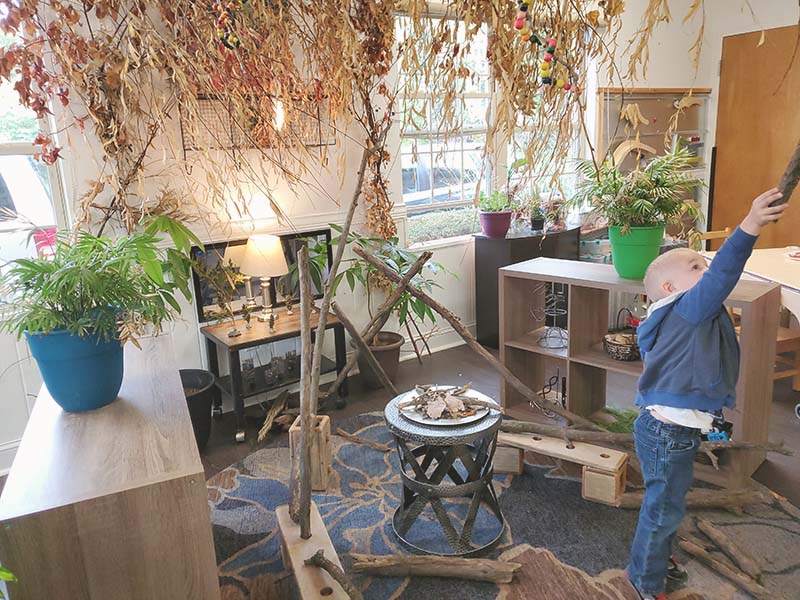
Image of an activity space at Kid’s Country Green, Ohio that has been personalised by children and their educators with objects found on local excursions.
Step 2: Engage your educators, children, and parents
To create an authentic, locally relevant early childhood environment, you will need to find what motivates and inspires you and your learning community.
- Start with the educators. Building a team with complementary skill sets and compatibility is an essential foundation for engagement. Together with a shared vision and values, the lines of communication will be clear, and a natural rhythm will form. Understanding your team’s strengths allows you to delegate tasks and responsibilities that inspire and motivate them. Connection and consistent feedback will continue the forward momentum of this journey, building positive relationships within your team. A collaborative, professional culture is imperative when supporting educator engagement as it promotes mutual respect among everyone involved.
- Educator engagement drives child engagement. When educators are actively present and engaged, children will connect, and relationships will thrive. To understand the importance of child engagement, it is critical to look at how an early years’ environment supports play. Creating welcoming spaces where children feel comfortable enough to actively participate, explore, and grow. To do this, we need to use the guidance of The Potential Place, and the Spatial Conditions of Emotions, looking to children’s interests to inspire engaging meaningful environments.
- Educator and child engagement drives family engagement. Parents and caregivers measure educator engagement through communication and observation of relationships. Drop-off and pick-up are the most common times parents engage with your early years’ environment, so be aware of this. It doesn’t mean you need to create a pristine environment at the end of the day, but a chaotic space with toys splayed everywhere is not a sign of a well-run day. Communicating through the sharing of pictures and videos involves parents in their child’s journey. Once they are engaged, you’ll be surprised at the resources they will share to support your early year’s learning programme.
"A rich and varied environment supports children's learning and development. It gives them the confidence to explore and learn in a secure and safe, yet challenging, indoor and outdoor space." - Hodman, 2011
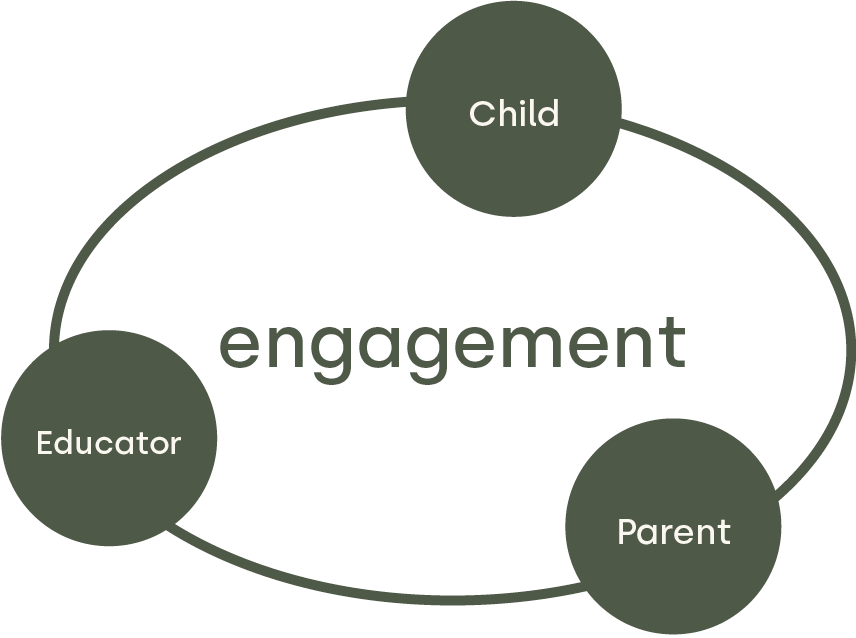
Step 3: Decide to maintain your environment
Our physical environment influences how we feel, act, and behave. Well organised and well-arranged spaces will improve and support children's learning and development. Keeping your environments organised throughout the day helps restore order and reduces the workload at the end of the day, month, and year.
- Daily routines. Our lives are made up of everyday practices that help keep us on schedule from the morning to the end-of-day routines. Both children and adults benefit from having a rhythm with predictable stages. However, flexibility is essential, especially for infants and toddlers. Having areas organised and ready to go when children arrive and making sure the materials represent the children's diversity and developmental levels will help maintain your environment.
Organising your resources efficiently will actively support resetting throughout the day. The system needs to support children’s independence and consider where certain resources are located. For example, put heavier items on lower shelves, so they are easily accessible, provide developmentally appropriate challenges, whilst placing smaller resources at eye level to draw their attention, and rotate materials to encourage children's interest and keep the materials novel.
As educators, by caring for the resources and the environment, we are role modelling this behaviour for children; handling books with care, taking dirty shoes off at the door, and looking after toys and materials. Consistently repeating this message allows children and educators to practice and holds everyone accountable. Encouraging children to help make decisions about where materials live is also valuable.
- Weekly / monthly. Ensuring the team is accountable for daily tasks, accompanied by weekly and monthly working sessions to reorganise the environment, will help keep educators motivated and accountable.
- Annual. There is nothing quite like a child fully engrossed in play to truly test the durability of your environment. Create an annual plan that includes regular maintenance, such as touching up paint finishes, cleaning windows, flooring, and general cleanliness. Without a plan, this kind of work can creep up on us and feel daunting. Scheduled maintenance ensures your environment is presentable, gives longevity to its finishes, and removes responsibility from the day-to-day routines.
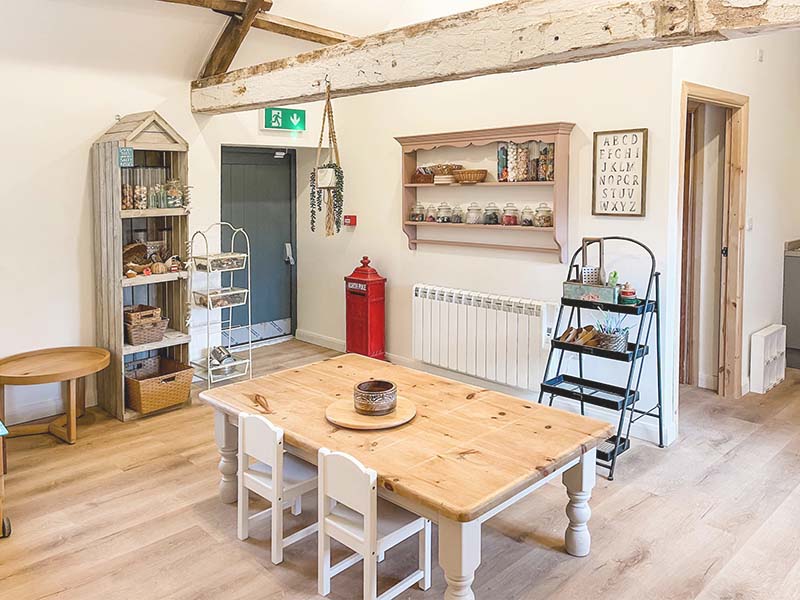
Image above of the expressive arts space at Roseville Childcare, United Kingdom.
Personalised, authentic, relevant early education environments support the growth and development of our children. Having materials and resources in well-defined areas of play supports children’s social and emotional interactions. See our blogs on each of our Directory areas or areas of play for more information (e.g. Expressive Arts: meaningful ways to support the creative power of children) or search the Enspire’s by Directory for visual inspiration.
![]()
References:
* The Practice of Biophilic Design, Kellert & Calabrese
Clayton & Forton, 2001. Play and the Learning Environment
 Michelle Pratt
Michelle Pratt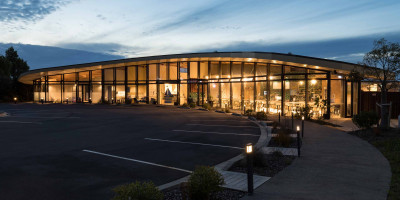
 Tiffany Smith
Tiffany Smith